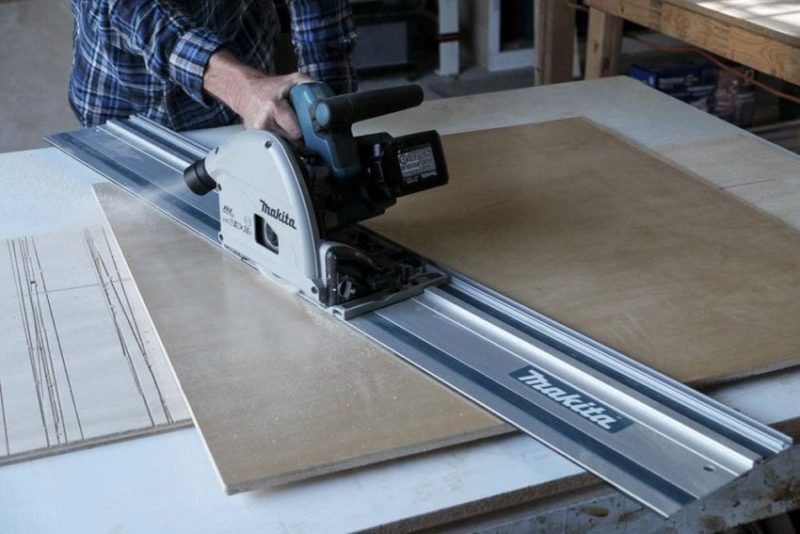Have you ever wondered if a tracksaw could replace a table saw? This article explores the potential of a tracksaw as a versatile alternative to a traditional table saw. Find out whether a tracksaw can perform the same tasks as a table saw and if it could be a valuable addition to your workshop. Discover the benefits and limitations of both tools and make an informed decision about which one is right for you. Whether you’re a seasoned woodworker or a DIY enthusiast, this article will help you navigate the world of power tools and determine if a tracksaw is a suitable substitute for a table saw.
Can a Tracksaw Replace a Table Saw?
If you are someone who enjoys woodworking or DIY projects, you may have wondered if a tracksaw can replace a table saw. Both tools have their own merits and specific uses, but they also have distinct differences. In this article, we will explore the difference between a tracksaw and a table saw, discuss the advantages of each, and provide guidance on which tool is more suitable for different applications.

This image is property of www.thesawguy.com.
Difference Between Tracksaw and Table Saw
Before determining if a tracksaw can replace a table saw, it is important to understand the fundamental differences between these two tools. A table saw is a stationary, bench-mounted tool that features a circular blade protruding from a flat surface. It is designed for making accurate rip cuts, crosscuts, and bevel cuts in larger workpieces. On the other hand, a tracksaw, also known as a plunge saw, is a handheld tool equipped with a circular blade that runs along a guide rail or track. It is primarily used for making precise cuts in sheet materials, such as plywood and MDF.
Advantages of Tracksaw
One of the major advantages of a tracksaw is its portability and versatility. Unlike a table saw, which is typically large and immobile, a tracksaw can be easily transported to different job sites or used in confined spaces. The guide rail system adds stability and ensures straight cuts, making it an excellent tool for projects where precision is vital. Additionally, a tracksaw allows you to make plunge cuts, meaning you can easily start a cut in the middle of a workpiece without the need for pre-drilling or edge guides.
Advantages of Table Saw
While a tracksaw offers portability and precision, a table saw excels in terms of cutting capacity and power. Table saws have larger tables and more powerful motors, making them ideal for handling larger workpieces and thicker materials. They are also capable of making a wider range of cuts, including dado cuts, rabbets, and grooves. Additionally, table saws often come with various accessories, such as miter gauges and crosscut sleds, that enhance their versatility and allow for more intricate woodworking tasks.
Cutting Capacity
When it comes to cutting capacity, a table saw clearly outperforms a tracksaw. The large table surface of a table saw allows for stable support and precise control when cutting larger or longer materials. With the use of appropriate accessories, a table saw can also handle angled cuts, bevel cuts, and dado cuts with ease. On the other hand, a tracksaw is limited by the length of its guide rail, typically ranging from 24 to 60 inches. While this may be sufficient for most sheet materials, it can pose challenges when working with longer pieces.
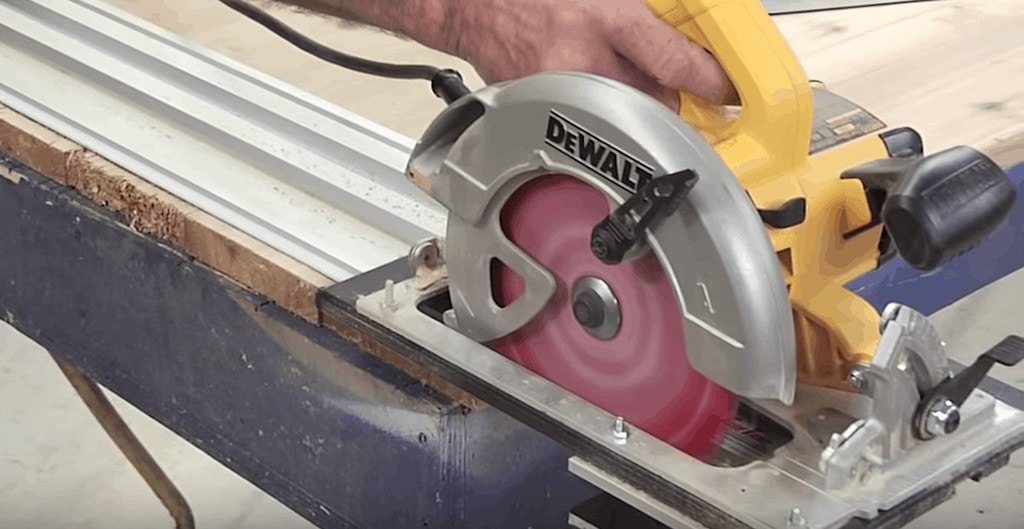
This image is property of www.thesawguy.com.
Versatility and Portability
In terms of versatility and portability, the tracksaw takes the lead. Its handheld nature and guide rail system allow for easy mobility and the ability to work in cramped spaces. Unlike a table saw, which requires a dedicated workshop or ample space, a tracksaw can be used on the go or in temporary workspaces. The plunge cutting capability of a tracksaw is also advantageous, as it eliminates the need for manual pilot holes or edge guides, making it a suitable tool for both experienced woodworkers and beginners.
Safety Features
Both tracksaws and table saws come with safety features designed to protect the user from potential accidents. Table saws typically have blade guards, anti-kickback pawls, and splitters to prevent kickbacks and blade contact. Some models also feature a riving knife, which helps prevent material pinching. Tracksaws, on the other hand, often come with retractable plunge spring mechanisms that reduce the risk of kickbacks and provide added safety during cutting operations. Additionally, most tracksaws have an automatic blade stop feature that allows the blade to retract when it is lifted off the material or encounters an obstruction.
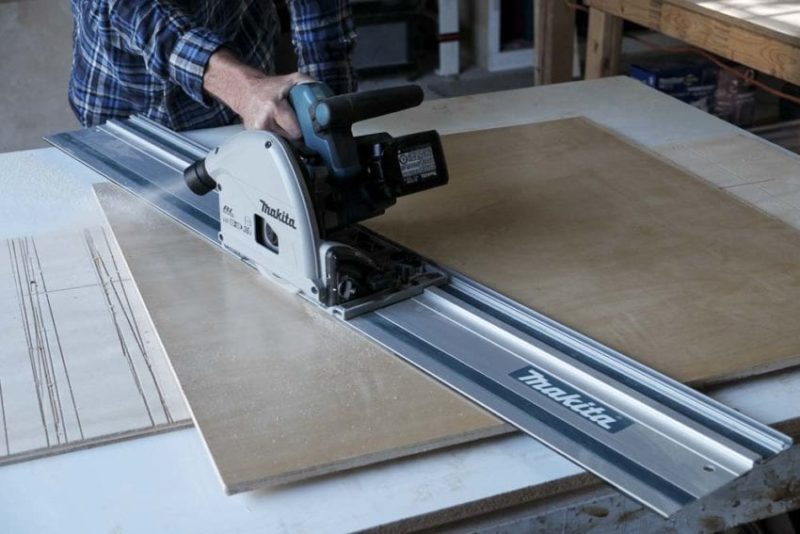
This image is property of www.protoolreviews.com.
Accuracy and Precision
In terms of accuracy and precision, both tools can deliver impressive results when used correctly. A table saw, with its stable and fixed setup, allows for consistent cuts and precise measurements. However, a tracksaw with a guide rail system offers enhanced accuracy by ensuring straight cuts and reducing the risk of human error. The ability to make plunge cuts without the need for edge guides also contributes to the precision that can be achieved with a tracksaw. Ultimately, the accuracy and precision of both tools depend on the skill and experience of the user.
Cost Considerations
When it comes to cost, table saws tend to be more expensive than tracksaws. A good-quality table saw with all the necessary accessories can cost several hundred dollars or more, while a tracksaw with a guide rail system is generally more affordable. However, it is important to consider the specific needs of your projects and the long-term value of the tool before making a purchasing decision. Investing in a high-quality table saw may be justified if you frequently work with larger materials or require the versatility and power that a table saw offers.
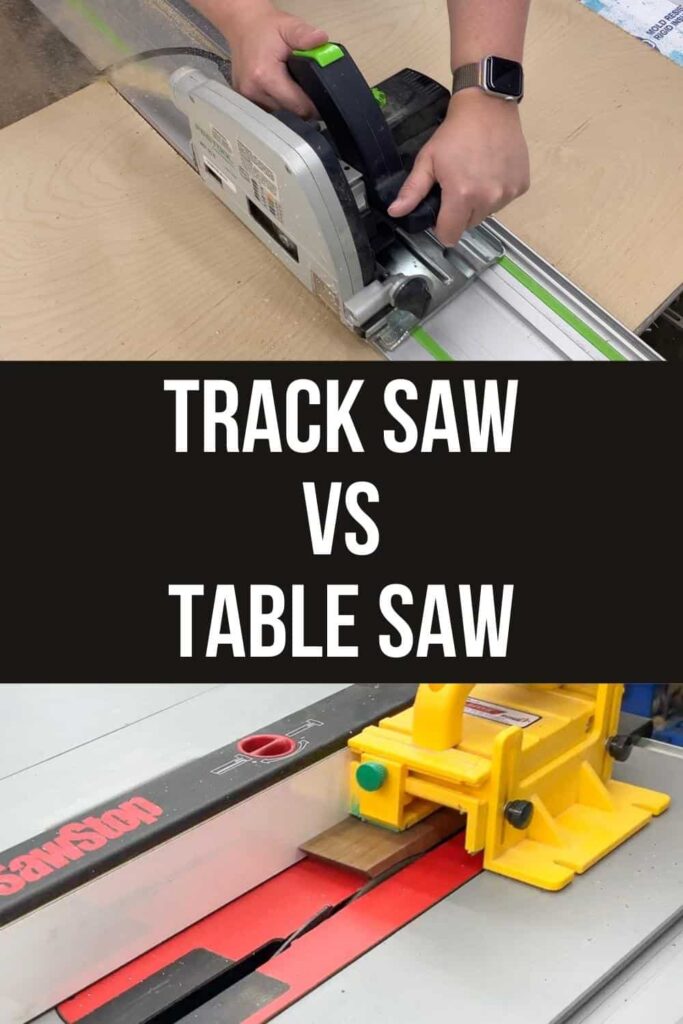
This image is property of www.thehandymansdaughter.com.
Ease of Use
In terms of ease of use, a tracksaw offers a more intuitive and beginner-friendly experience compared to a table saw. The handheld nature of a tracksaw allows for greater control and maneuverability, making it easier for novices to achieve accurate cuts. The guide rail system further simplifies the cutting process by providing a straight path and minimizing the chance of mistakes. On the other hand, operating a table saw requires more practice and familiarity with the tool, as well as proper technique to ensure safe and accurate cuts.
Recommended Applications
In conclusion, while a tracksaw can offer versatility and precision, it cannot fully replace the capabilities of a table saw. A tracksaw is recommended for projects that involve working with sheet materials, making plunge cuts, or require portability and maneuverability. It is an excellent choice for tasks such as cutting plywood, trimming doors, or installing flooring. On the other hand, a table saw is indispensable for heavy-duty woodworking tasks that involve cutting larger or thicker materials and require a wider range of cuts. It is ideal for professional woodworkers or hobbyists who often work on intricate projects or need the power and stability that a table saw provides.
In summary, both a tracksaw and a table saw have their own unique advantages and applications. Whether you decide to invest in a tracksaw, a table saw, or both, it ultimately depends on the specific requirements of your woodworking projects and your personal preferences as a craftsman. By understanding the differences between these two tools and considering factors such as cutting capacity, versatility, safety features, accuracy, cost, and ease of use, you can make an informed decision that will enhance your woodworking skills and ensure successful project outcomes. Happy woodworking!
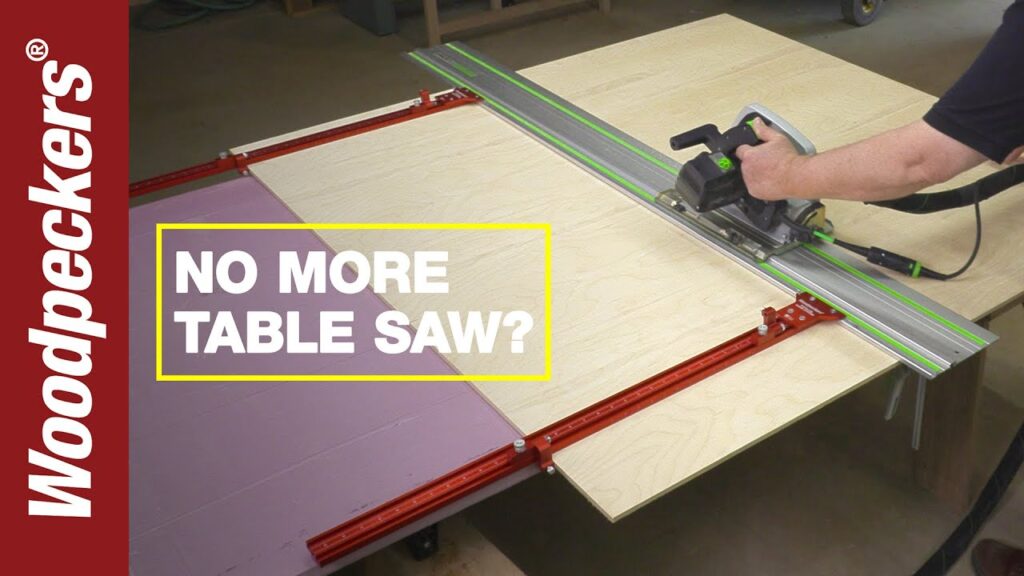
This image is property of i.ytimg.com.
